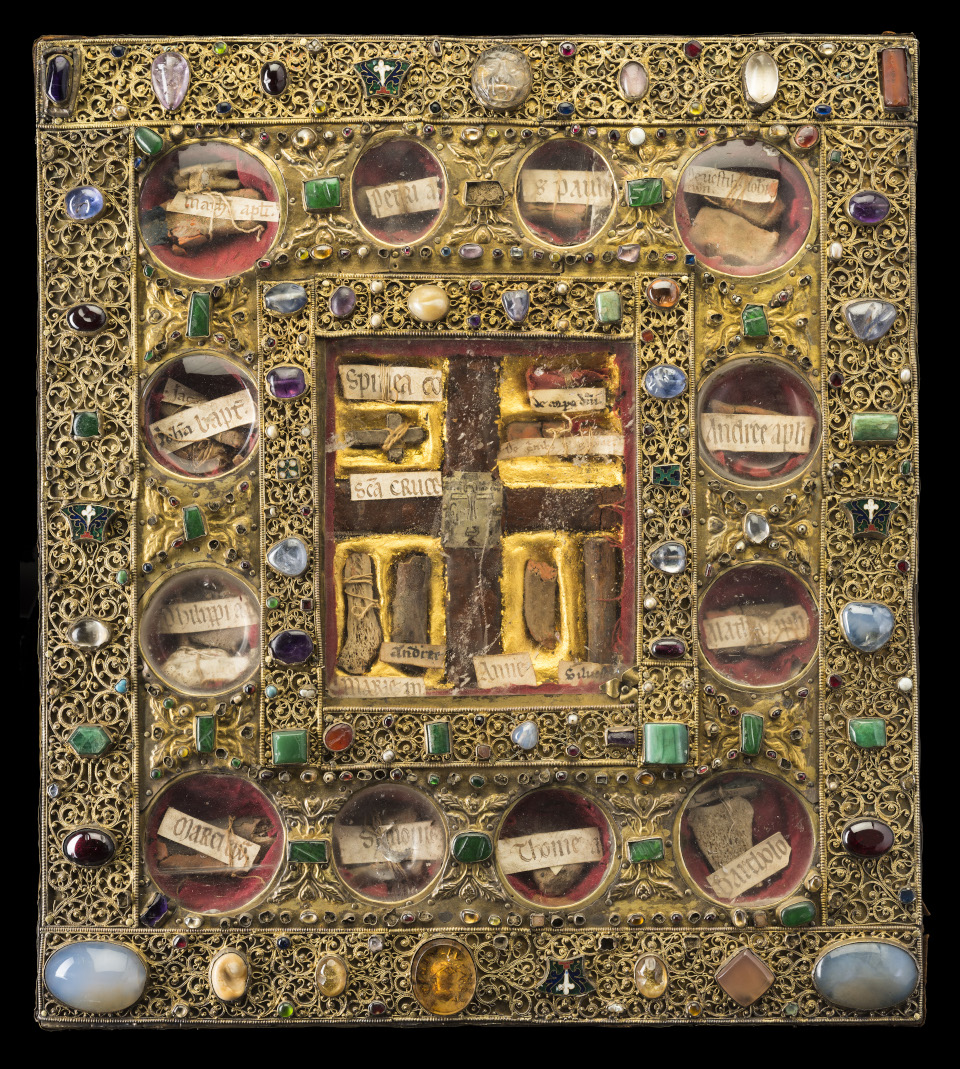Treasure Art
The art among Halberstadt Cathedral’s treasures comprises around 70 precious mediaeval objects made of gold, silver, ivory, glass, rock crystal, pearls and gemstones. These include goblets, bowls, bottles, boxes, crosses, life-size arms, display panels and frames. They were and still are used as a worthy means of containing and presenting the most holy items in a mediaeval church: the relics.
These were body parts, bones or certain objects owned by saints, martyrs or even Christ himself.
As the relics were held in such high esteem, they were only kept and shown in very precious containers. The Halberstadt bishops started adding to the collection of relics as soon as the diocese was founded in the 9th century. In 1208, it grew in size and significance thanks to the acquisitions and gifts by Bishop Konrad von Krosigk, who brought back numerous high-quality Byzantine relics and works of art from the Fourth Crusade. These form the basis for the outstanding holdings of early Byzantine goldwork that have been preserved in Halberstadt to this day

